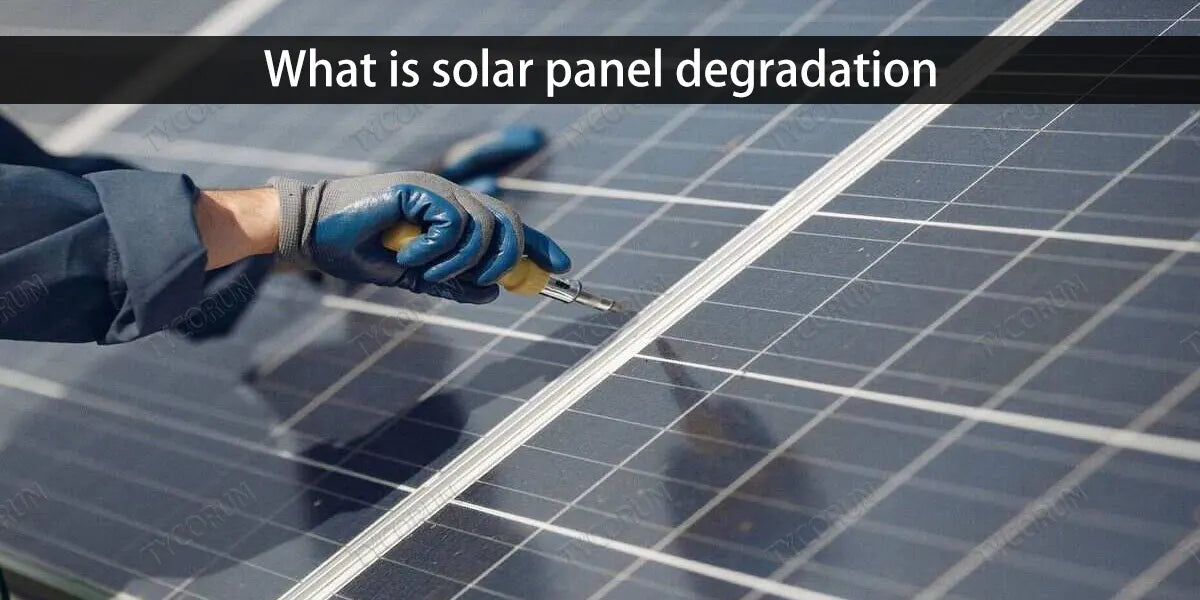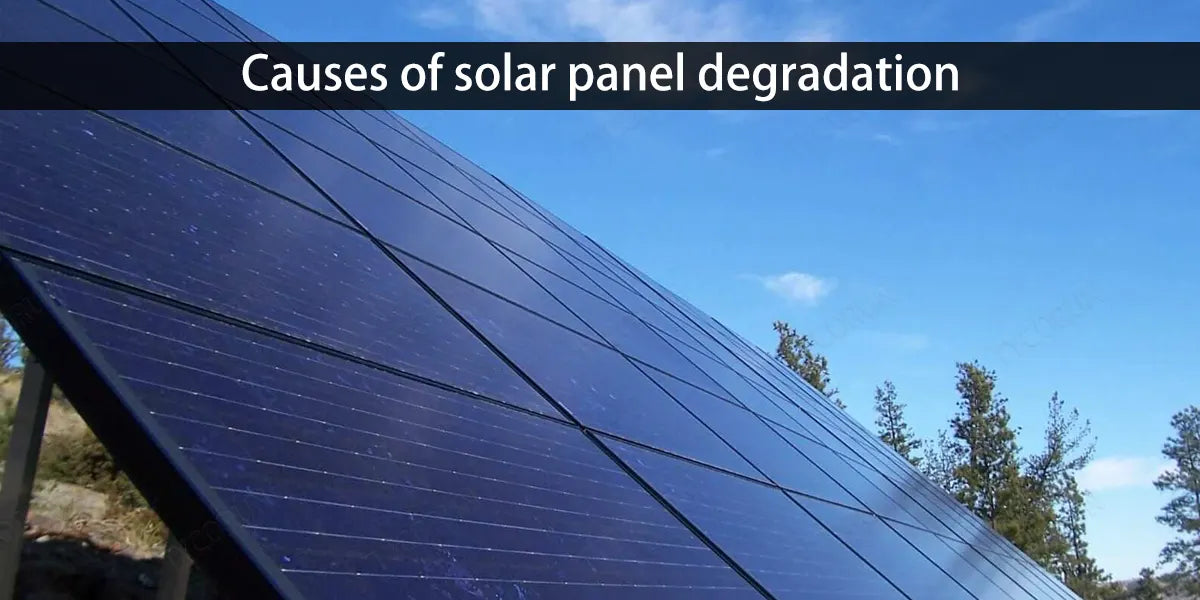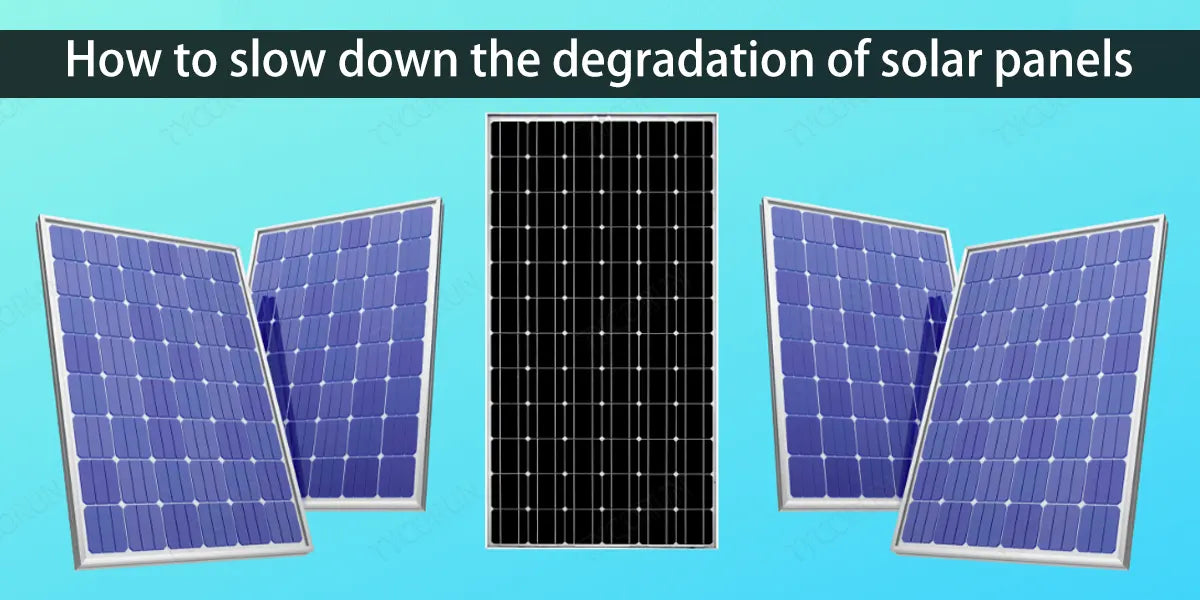
Main content:
Photovoltaic technology has been extensively researched and developed over the years. The standard life of most PV modules is 25 years. Solar panels that last longer are being developed.
In this issue, we will take you to understand the life limit of photovoltaic modules and correctly understand the concept of solar panel degradation.
1. What is solar panel degradation
Solar panel degradation encompasses a range of effects through which PV modules reduce their efficiency year after year. Aging is a major factor affecting the degradation of solar panels, which can cause corrosion and delamination, as well as affect the performance of photovoltaic materials.
Other degradation factors affecting PV modules include light-induced degradation (LID), potential-induced degradation (PID), outdoor exposure, and environmental factors. At the same time, for integrated home solar systems, the lack of power generation will also be linked to the inverter (3000w inverter, 2000w inverter).

There are several tools and techniques used to determine solar panel degradation, including visual inspection, infrared thermography, electroluminescence (EL), and performance calibration.
2. The impact of solar panel degradation
Solar panel degradation is caused by aging and is not only affected by large-scale PV installations, but is present in every rooftop PV installation worldwide. That's why homeowners with rooftop PV systems and home energy storage that consume solar power from the grid are paying attention.
Considering a well-maintained photovoltaic system with ideal conditions, the appropriate degradation rate for high efficiency solar panels is estimated to be 0.5% per year. However, in some extreme cases, solar panel degradation rates can reach 1.4% or 1.54% per year.
This information highlights the importance of installing high-quality photovoltaic modules manufactured by reliable companies and maintaining the solar array. Taking every precaution will ensure that the degradation rate of solar panels is minimal and the PV system lasts longer.

The higher the rate of degradation of solar panels, the higher the energy loss experienced by the PV system throughout its life cycle. Solar panel manufacturers typically establish a reference for degradation rates, and each module type typically has a performance guarantee plot that indicates the expected yield as a percentage of the number of years.
3. Causes of solar panel degradation
The degradation of solar panels is not caused by a single phenomenon, but by several degradation factors that affect photovoltaic modules. The main cause is the aging of the use of time.
Other causes of solar panel degradation include aging, light-induced degradation (LID), potential degradation (PID), and backsheet failure, among others. The following will help you understand the reasons for the degradation of photovoltaic modules and correctly understand the reasons for the degradation of solar panels.
- Deterioration due to length of use
Aging is a major degradation factor affecting the service life of PV modules. This degradation is a direct result of the module's years of exposure to rainfall, snowfall, extreme temperatures, hail, dust, and other external factors. When PV modules are exposed to the above external factors, they begin to decay and reduce their efficiency over time.
This occurs due to corrosion of the solar panel frame, delamination of glass and backsheets, and loss of photovoltaic material properties, all of which result in the degradation of photovoltaic modules by an average of 0.5% per year.
- Light-induced degradation
Light-induced degradation is a phenomenon that causes the rate of degradation of solar panels to accelerate, mainly affecting modules in the first year of operation. This is the result of sunlight accelerating the oxidation process between boron and oxygen used to coat photovoltaic materials.
The degradation of solar panels caused by LID has severely affected modules made of monocrystalline silicon, especially p-type wafer modules. PERC modules also have a higher LID effect.

- Potential-induced degradation (PID)
Potential degradation, or PID, is another degradation mechanism that affects PV modules and reduces their efficiency. Unlike LID, PID does not seriously affect specific types of PV modules, but it does affect monocrystalline c-Si, polycrystalline silicon (poly c-Si) and thin film PV modules, among others.
Large photovoltaic installations are characterized by high voltages per line, which causes a potential difference between the cells and the frame, resulting in leakage current and power loss. The understanding of PID is still incomplete and requires further research, but it is known to produce high power losses in non-grounded PV systems with voltages above 1500 volts. This is related to large utility-scale and commercial PV systems.
- Backplane failure
Backplane failure is another cause of degradation and is a major cause of premature degradation. It has been determined that between 9% and 16% of PV modules suffer from backsheet failure. This is a matter of concern, as the backsheet of a PV module is the first line of defense to isolate and protect the internal components from external factors such as moisture, wind, dust, and UV rays.
The main cause of solar panel degradation due to backsheet failure is the delamination of the backsheet or the formation of cracks in the material. When the backsheet fails, the internal components of the solar panel are exposed to external factors, and the life of PV modules is shortened.
4. How to slow down the degradation of solar panels
Just as solar panels have different degradation rates, there are ways to accelerate or reduce solar panel degradation. These include the materials used to make PV modules, the assembly process, the installation process, maintenance practices, and even the weather.
- Material quality
Most PV modules that fall under the category of accelerated solar panel degradation are due to LID, PID, and backsheet failures. These degradation mechanisms are partly caused by material defects, so it can be concluded that PV modules with higher quality materials degrade at a slower rate.
- Assembly of modules
PV modules may feature high-quality materials, but they require the most rigorous manufacturing processes to ensure optimal performance. Improved manufacturing techniques can reduce solar panel degradation and extend the life of photovoltaic modules.

- Proper installation
When transporting and handling solar panels during installation, the modules are subjected to mechanical stress. This stress can cause solar panels to degrade due to backplane failure and cause some power loss or damage to PV modules.
In order to reduce the degradation of solar panels caused by backsheet cracking and extend the life of photovoltaic modules, it is recommended that the components be properly handled and installed by certified professionals. This is especially important when dealing with more fragile thin film solar panels.
- Regular maintenance
Regular solar panel maintenance is an important strategy used to reduce solar panel degradation in both large and small applications. Predictive and preventive maintenance can improve the performance of solar arrays by extending the life of PV systems and reducing degradation caused by pollution and dust.
Taking into account the presence of dust, snow, fallen leaves, and other climatic conditions, the frequency with which maintenance should be performed may vary. The number of birds in the area (which is related to bird falls) may also increase the frequency of maintenance required.
- Weather factors
Weather phenomena are not a variable that can be controlled, but they can be taken into account when installing photovoltaic modules and performing maintenance to avoid further degradation of solar panels. When conducting an analysis prior to the installation of a large PV system, a dedicated study of the location and historical natural hazards should be considered to ensure that the installation location is viable.
An important option that can be taken when preparing for extreme weather events is to choose PV modules with better mechanical properties. This could include a better ingress protection (IP) index, stiffer frame ratings, glass with higher impact resistance, and more.
5. Conclusion
Considering the limited life span of solar panels, it is important to note that they can be recycled and reused for grid operations, EV charging stations, and other applications. The better news is that researchers are currently working to extend the life of photovoltaic modules and develop technologies to reduce the degradation of solar panels.
Related articles: Top 10 home solar panels manufacturers in the world, top 5 photovoltaic backsheet companies, solar panel repair